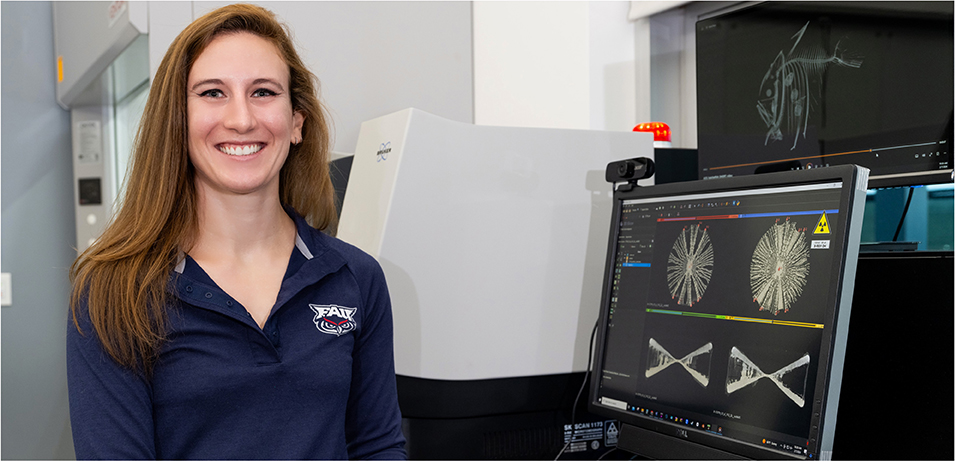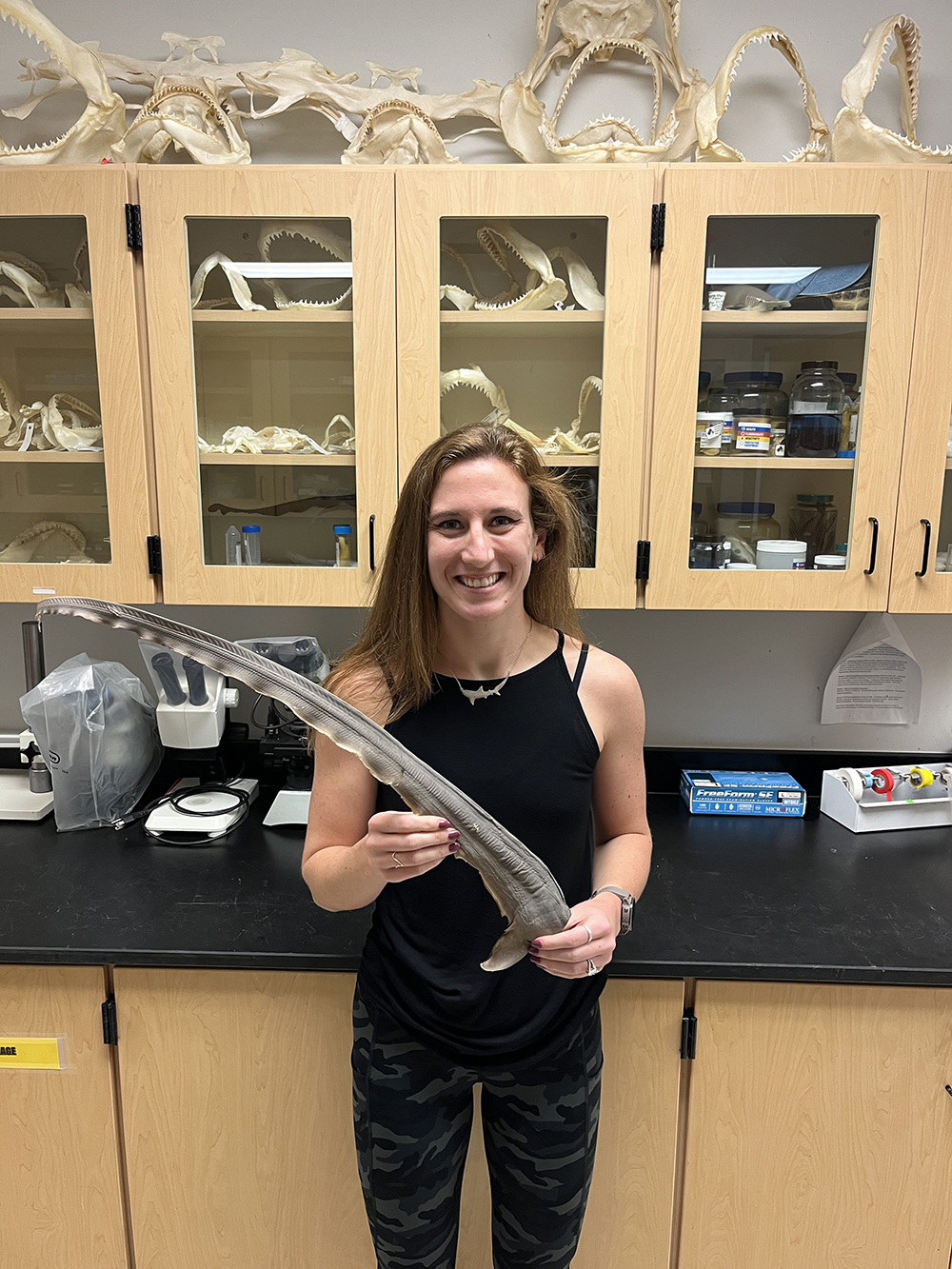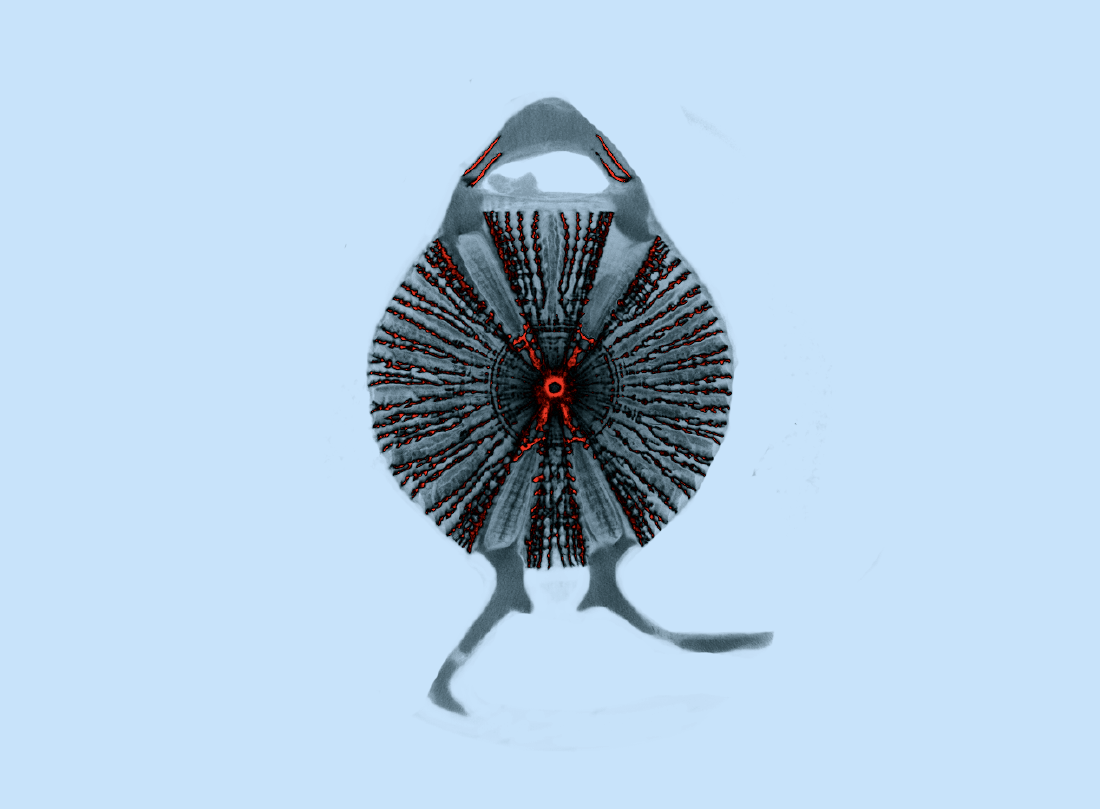
Author: Gael-Lynn Laguerre
Date: February 19, 2024
 Thresher sharks have many characteristics that set them apart from all other shark species, most notably their extremely long, machete-like tail. Threshers use this tail to mechanically stun their prey using a whipping motion, then immediately gobble them up! This anatomical feature enables these animals to succeed as apex predators. The whipping behavior of these sharks has been compared to the likings of an Indiana Jones of the sea!
Thresher sharks have many characteristics that set them apart from all other shark species, most notably their extremely long, machete-like tail. Threshers use this tail to mechanically stun their prey using a whipping motion, then immediately gobble them up! This anatomical feature enables these animals to succeed as apex predators. The whipping behavior of these sharks has been compared to the likings of an Indiana Jones of the sea!
But what is the science behind these creatures' ability to move their tails in a whip-like motion? Researchers, including Ph.D. candidate Jamie Knaub and her professor, Dr. Marianne Porter from the Florida Atlantic Biomechanics (FAB) Lab, have discovered that the movement is supported by the unique structure of the spinal vertebrae located toward the shark’s tail. How was that done?
The FAB Lab partnered with the National Oceanic and Atmospheric Administration (NOAA)’s Apex Predator Program to study the anatomy of the shark’s spine, comparing the structure of the vertebrae located near the front of the body to the vertebrae located near the base of the tail. These comparisons were done using 10 shark specimens at different stages of development (embryos, juveniles and adults) so that the structural changes in vertebral height, length and width could be understood as a function of shark growth. Those changes were revealed by using micro-computed tomography scanning (CT). This type of imaging is just like a CAT scan, or 3D x-ray, which may be more familiar to you, but at a finer scale. The scans were performed at FAU High School Owls Imaging Lab which is run by FAU Marine Lab alumna, Dr. Tricia Meredith! That scanning methodology captured images of each vertebra’s internal microstructure and mineralized support.
The results showed that as the sharks grew, the vertebrae near the sharks’ tail became uniquely reinforced (compared to those located farther forward) by an increased number of mineralized plates (termed lamellae). These increase spinal stiffness and to support rapid whipping movements in a viscous (seawater) environment. Comparisons across different growth stages also revealed that these changes in stiffness-enhancing structures increased as the sharks matured, enabling larger animals with more robust tails to enhance their whipping motion, even though their tails were larger and encountered greater underwater resistance.
These findings were recently published by Knaub, Porter, Meredith, and co-authors within the journal Royal Society Open Science . This cool study even caught the attention of popular news outlets like the New York Times !
They may not wear a fedora or a leather jacket, but with a vertebral structure like that, thresher sharks can crack a (tail) whip just like Indiana Jones!

|
| micro-CT image of a thresher shark vertebra by Jamie Knaub |